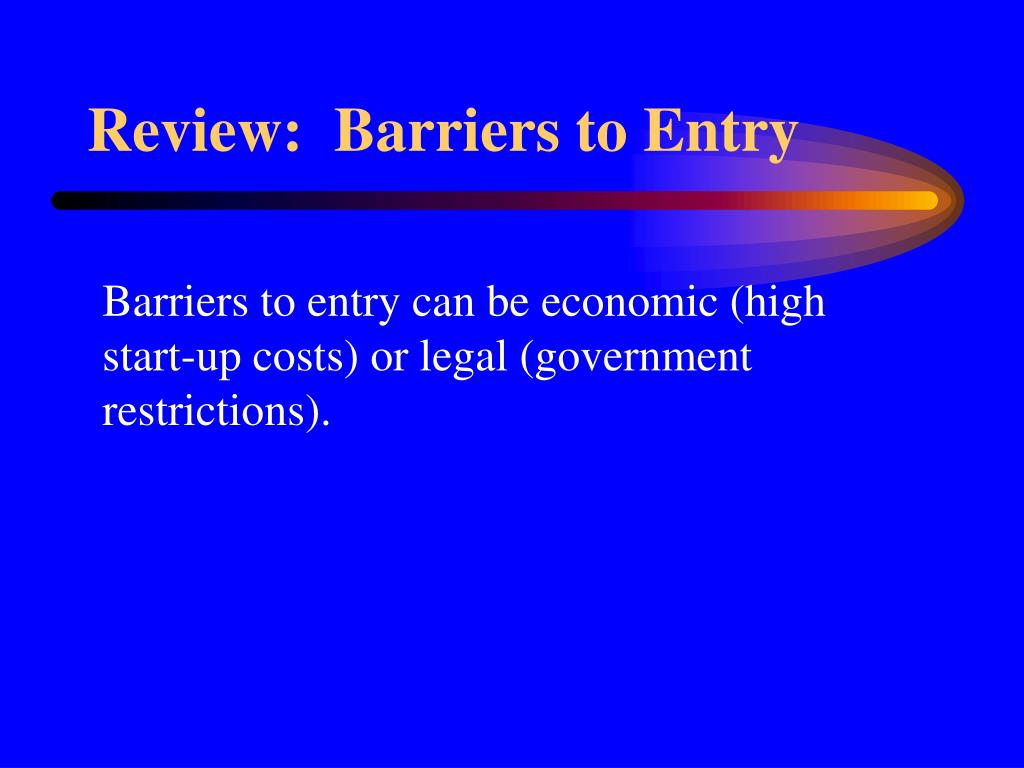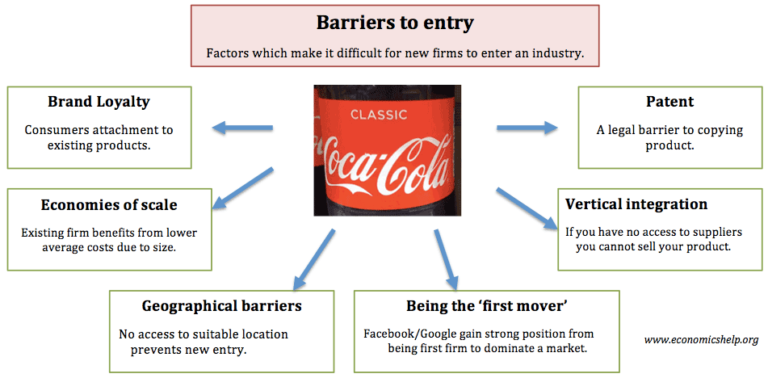

For example, Coca-Cola and Pepsi have created a high degree of brand awareness. The other major barrier is brand recognition, which refers to customer familiarity with a product or a corporation. This allows it to sell its ice cream for less money, making it difficult for the regional business to lure customers away from the national brand. Thus, the average cost of producing a gallon of ice cream is significantly lower for the larger company. Meanwhile, the smaller company will spend $2.00 per gallon. According to these figures, the larger company spends $1.33 per gallon of ice cream. The national company is spending twice as much money, but it produces 7,500 gallons of ice cream a day, while the regional company will only produce 2,500 gallons. Suppose the larger business spends $10,000 a day to produce ice cream, and the smaller one will only spend $5,000. For example, consider the challenges facing a small entrepreneur who wants to manufacture and distribute ice cream in the northeastern region of the United States but who must compete against a national brand-name ice cream company. As a result, large businesses tend to be less expensive to operate than small businesses. The term economy of scale refers to the way that, when a business grows, its average production costs usually decrease.

In the arena of nationally distributed products and services, two of the most significant barriers to entry are economies of scale and brand recognition (also called brand awareness). Advancing to this final status required the formal approval of all members of the guild. Individuals entered as apprentices (beginners learning the trade), developed into journeymen (who were trained but still supervised by an expert), and progressed to become master craftsmen. Guilds had formal systems in place for admitting, training, and ranking members. These organizations were composed of people who were in a lower class than the aristocrats and provided goods and services for them. In the Early Middle Ages (from about 500 to 1000), guilds (associations of craftspeople such as blacksmiths or carpenters) began to appear, acting as a new kind of barrier to entry. If an individual was not born into an aristocratic family, that person would not be able to gain entrance into the aristocratic class. Throughout the Middle Ages (approximately 500 to 1500), as nations were formed in Europe, membership in the aristocracy gradually came to be determined by birth. They were given authority to make decisions on behalf of the community, a privilege they earned through their deeds. In Western culture the aristocratic or noble class came into being in ancient Greece, where leaders of armies were judged to be the most virtuous, and therefore the best, men in society. Throughout history most aristocracies have been hereditary, meaning that an individual had to be born into this group in order to claim membership. Political rule by an aristocracy (a small, privileged social class that usually consists of nobility) was one of the earliest and most effective barriers to entry for individuals seeking to rise in society and acquire wealth. In other fields, such as athletics and the arts, the degree of talent required to make a living is an effective barrier to entry. For example, in the United States a person who wants to become a lawyer must graduate from law school and pass a bar examination (a test given by each state, which, if completed successfully, certifies that an individual can practice law in that state). These barriers frequently include educational and licensing requirements.

All of these impediments benefit existing restaurants by restricting the number of new competitors that can enter the market and lure away customers.īarriers to entry can also refer to the obstacles an individual faces when seeking employment in a certain trade or occupation. In the United States the fees for such documents vary from state to state.
#Barrier to entry license
This requires two separate licenses, a wine-and-beer license and a liquor license.

After these costs have been met, the restaurant owner is likely to want to offer customers alcoholic beverages. For instance, the start-up costs to open a dining establishment include the rent (monthly fee) for space in a building, the kitchen equipment, the cost of food and ingredients, and many other fees. High start-up costs (the money required to open a business) and licensing fees are two of the most effective barriers to entry, especially in the restaurant business. Barriers to entry include all of the obstacles that discourage and sometimes prevent new companies from entering an area of business.


 0 kommentar(er)
0 kommentar(er)
